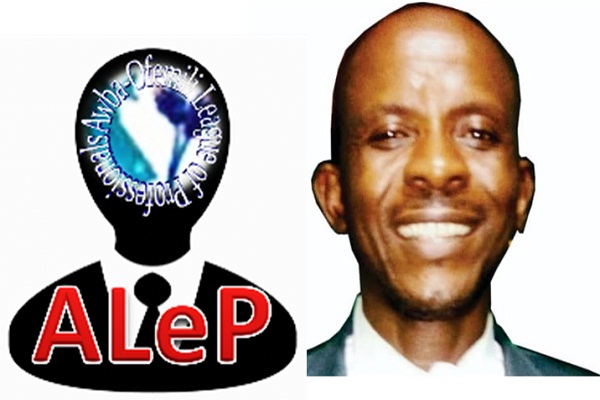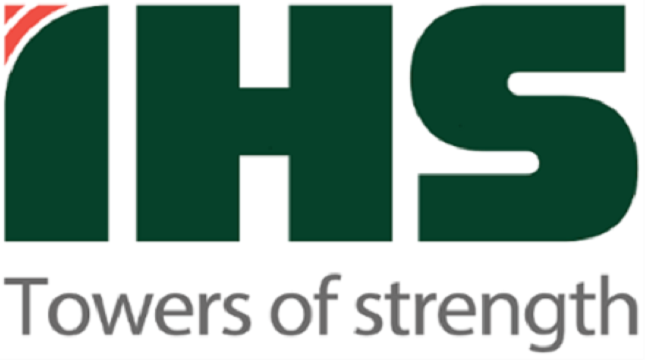News
Group Commends Release of Mathew Onwuasoanya, Applauds ANPC, NUJ, Security Agencies

The Awba-Ofemili League of Professionals (ALeP) has received the good news of the release of one of their own, a lawyer and journalist, Barr. Mathew Onwuasoanya from incarceration since May 30 this year.
Family sources confirmed to ALeP that Onwuasoanya regained his freedom after some 40 days following his disappearance from his residence in Awka, Anambra State.
Responding to this piece of good news, Mr. Remmy Nweke, national coordinator of ALeP, appreciated God for His mercies in the life of Mathew Onwuasoanya all the while he was missing.
ALeP also commended profusely all those who came out to play one role or another to ensure Onwuasoanya was released unhurt, especially the security forces, well-meaning professional groups, individuals and colleagues.
“We are grateful to all those who joined us in prayers and advocacy whilst the episode lasted, especially his colleagues at the Anambra Newspapers and Printing Corporation (ANPC) and members of the Nigeria Union of Journalists (NUJ), to name a few, ” Nweke said.
According to him, “our prayers have been answered and we are eternally grateful to God and for the support, especially morally received till this news came.”
ALeP recalled that Mathew Onwuasoanya was abducted from his residence at the early hours of May 30, 2020, and had rejoined his family and friends on Thursday, July 9, 2020.
Barr. Onwuasoanya, who also is an indigene of Awba-Ofemili and works with the Anambra State-owned National Light Newspaper with Awka as work station.
Confirming this in a related statement issued by Sir Chuka Nnabuife, managing director/ceo, Anambra Newspapers and Printing Corporation, Awka, said Onwuasoanya confirmed that he was picked up by some security men as reported but has been released.
“Anambra Newspapers and Printing Corporation (ANPC), publisher of the National Light group of Newspapers, happily announce that our missing reporter, Barr. Mathew Onwuasoanya has been found,” Nnabuife said.
He was further quoted as “Managing Director and CEO of National Light, Sir Chuka Nnabuife, Editor of the newspaper, Mrs Rose Oranye, along with Chairman, Ananmbra State Council of Nigeria Union of Journalists (NUJ), Sir Emma Ifesinachi and the council’s Secretary, Mr. Emma Udeagha, on Thursday, July 9, 2020, met with Mr Onwuasoanya and members of his family.
“During the meeting, Barr. Onwuasoanya narrated his ordeal within the five weeks of his surprised absence.
He explained that he was abducted from his residence on May 30, 2020.
He confirmed that he was picked up by some security men as reported but he got released thereafter.
“After the shocking encounter with security agents which left him rattled, he promptly sought medical attention to attend to the traumatic experience.
He disclosed that he received treatment all the while until he returned home while expressing his regret for his inability to reach out to anybody given that he lives alone and had lost his phones in the process.
“ANPC hereby specially express gratitude to Anambra State Government, led by Governor Willie Mmaduaburochukwu Obiano (Akpokuedike) for his very rare fatherly concern. Commissioner for Information and Public Enlightenment, C.Don Adinuba; the Commissioner of Police, Anambra State, CP John Abang; the Directorate of State Security (DSS), Ananmbra State Command; the NUJ executive and members in Ananmbra State.
“All operatives in the media industry within and outside Nigeria who contributed in no small way in tracing the whereabouts of Mr Onwuasoanya and identified with ANPC all through this period of dire need. We rejoice that we have found him.”
News
IHS Nigeria, UNICEF Donate Oxygen Plant to Bridge Health Gap in River State

IHS Nigeria and its implementing partner, the United Nations Child Education Fund (UNICEF) has expressed satisfaction that the Oxygen Plant recently donated to Rivers State is helping to bridge the health Gap in the state and its environs.

This observation was made recently when officials from IHS Nigeria and UNICEF, carried out a project inspection visit to the plant located at the General Hospital in Eleme, Rivers State.
During the handing over of the oxygen plant to the Rivers State Government in 2024, the facility was reported to have a production capacity of 123 oxygen cylinders and 720,000 litres of oxygen every 24 hours.
The plant was built under a Public-Private Partnership involving UNICEF, the Canadian Government, IHS Nigeria, in partnership with the Rivers State Ministry of Health through the State Hospital Management Board.
Speaking during the visit to the facility yesterday, the Director of Sustainability at IHS Nigeria, Titilope Oguntuga, noted that the oxygen plant has saved lives and is helping to bridge health gaps in the eight other states where similar plants are located.
She further explained that the visit reflects the organisation’s commitment “not only to create opportunities for impact but to also continue supporting the healthcare industry by carrying out such interventions that directly impact individuals and saves lives. This plant is one of the nine oxygen plants we have built across the federation,” she said.
“We are particularly excited that it is helping to bridge health gaps—not just in Rivers State and its environs, but in all the states where the plants are currently located.”
Oguntuga informed that in terms of sustainability “we focus our intervention sustainability on four pillars; ethics and governance, education and economic growth, environment and climate change and finally, people and communities”.
She added that “the visit to the Rivers State oxygen plant is to have an assessment of how well the plant is functioning, the impact it is currently making and to generally understand how the operation is going”.
On his part, Chief of UNICEF Field Office, Port Harcourt, Dr Anslem Audu, stated that the plant has been very functional and useful to the people of Rivers State. According to him, “During the COVID-19 pandemic, a lot of patients needed oxygen and oxygen was not available. So many children will come down with pneumonia and it will become an emergency, they will need oxygen, but oxygen is not available in the hospital. But with this plant now available no child will die because of lack of oxygen in the hospital. The era of lack of oxygen is no longer there.
Audu added that “You can practically visit any of the hospitals in Port Harcourt and find out that they have oxygen and the product is from this plant all thanks to IHS Nigeria, the Canadian Government and UNICEF”.
The UNICEF field officer, who confirmed that the plant is functioning optimally, said it is producing enough oxygen for the state’s needs.
In his words, “The partnership between these three organizations and the Ministry of Health in Rivers State has really worked, and we are reaping the benefits of the partnership.
He urged the implementing partners, especially the government, to also invest in the sustainability of the facility by providing a source of electricity for the plant to be more functional.
Earlier, the Medical Director Eleme General Hospital, Dr Leechi-Okere Clarabelle, noted that since the day of the unveiling, the plant has been functioning very well. Commenting on impact he noted that “We’ve had success stories whereby oxygen is distributed to public hospitals in the state, including the two teaching hospitals in the state and then we have also extended distribution to some private hospitals within the state.
“We have two hubs that serve as storage and distribution points because of the location of the plant. We produce here and store somewhere in Port Harcourt so that people who come from a far distance can get oxygen from these hubs.
News
JAMB Accuses Student of Securing Admission through Identity Fraud

Joint Admissions and Matriculation Board (JAMB) has accused a 2025 Unified Tertiary Matriculation Examination (UTME) candidate of manipulating his identity and engaging in online blackmail.

Fabian Benjamin, head of public affairs, JAMB, issued a statement on the matter on Thursday.
He said one Chinedu Okeke, currently a 400-level Medicine and Surgery student at the University of Nigeria, Nsukka (UNN), gained admission in 2021 while claiming to be from Amuwo-Odofin, Lagos state.
JAMB said Okeke’s national identification number (NIN) records from 2021 confirm his Lagos origin.
The board stated it does not alter candidate information provided through NIN.
The board, however, said the 400-level student, who is facing potential challenges for incorrect credentials, is now claiming that it retrieved the wrong details for him from the National Identity Management Commission (NIMC) in 2021.
“[This] is unequivocally false, aimed at fabricating a defence for his case,” Benjamin said.
“The evidence suggests that Chinedu altered his records as filled in 2021 before registering for the 2025 UTME, a fact confirmed by even his advocates.”
The board questioned why a 400-level medical student would seek to study mechanical engineering in 2025, especially with “inconsistencies in his claims.”
JAMB alleged that Okeke “took advantage” of Lagos state’s quota in 2021, thereby obstructing the admission opportunities for other deserving candidates from the state.
It added that he then “attempted to manipulate his details with the NIMC” to unjustly claim representation from Anambra state in 2025.
The board criticised “online advocates” for “actively reaching out to Chinedu’s parents to extract emotional narratives rather than factual clarifications, neglecting to seek information directly from the university.”
JAMB affirmed its commitment to maintaining accurate records and preventing candidates from exploiting loopholes.
It warned that if UNN confirms any inconsistencies, it would notify the Medical and Dental Council to consider delisting Okeke.
“When a nation trivialises illegalities, it breeds a future fraught with potential criminality,” Benjamin’s statement concluded.
News
Check Point Report Finds Africa as Top Target for Cyber-attacks

Africa has become the most targeted region globally for cyber-attacks in the first quarter of 2025, according to new research from Check Point Software Technologies. The company’s Q1 2025 Global Cyber Attack Report reveals a steep rise in malicious activity as the continent continues to accelerate its Digital transformation.

Ethiopia emerged as the most targeted country in Africa during the reporting period. FakeUpdates ranked as the most common malware, while 80% of malicious files across the continent were delivered via e-mail. In contrast, 62% of threats in SA were distributed via the web.
On average, organisations in Africa faced 3 325 cyber-attacks per week – a staggering 72% above the global average of 1 938 attacks per organisation.
Check Point Software unpacked the findings at a media roundtable in Johannesburg. Eli Smadja, global research group manager at Check Point, provided a detailed overview of Africa’s evolving cyber threat landscape, which he said is increasingly defined by AI-powered threats, ransomware, infostealers, edge device vulnerabilities and cloud-based risks.
Among the most concerning developments was the discovery of a previously undocumented multi-stage backdoor, dubbed Stealth Soldier, currently being deployed in cyber operations targeting North African government entities. The malware forms part of a broader command-and-control infrastructure used in spear-phishing campaigns.
Smadja noted a growing trend in malware designed to bypass AI detection systems.
“These aren’t aimed at advanced large language models (LLMs), but rather at lower-level ones,” he said. “It’s about LLM evasion – fooling the AI and manipulating prompts.”
Despite the increasing use of AI in cyber security, Smadja cautioned against over-reliance on AI-driven defence systems. “AI still requires human prompting.”
Check Point is advocating for a zero trust model and a holistic, automated and consolidated approach to cyber security. This includes centralised threat visibility and simplified controls to protect against ransomware, phishing, data theft and vulnerabilities at the edge.
“Just having something at the perimeter isn’t enough,” Smadja said. “Cyber-attacks are not just targeting PCs or servers anymore. For instance, we’ve seen state-sponsored attacks aimed at fuel pumps to disrupt national supply chains.”
He highlighted the importance of understanding external risk – threats originating outside the organisation – especially as AI-driven ransomware and attacks on third-party service providers continue to rise.
“Printers, for example, are a major attack vector,” he added. “They’re often network-connected, and threat actors can exploit them to gain broader access.”
Credentials, Smadja noted, are also a lucrative commodity on the dark web, often selling for around $500.

 News1 day ago
News1 day agoCheck Point Report Finds Africa as Top Target for Cyber-attacks

 E-Financial2 days ago
E-Financial2 days agoGOEs’ Remit Over ₦2tn to FG in 2024

 Telecom2 days ago
Telecom2 days agoSave & Win: FCMB Promo Makes 12 Millionaires, Over 3,000 Winners

 Telecom2 days ago
Telecom2 days agoMTN’s Karl Toriola and Business Leaders Champion Corporate Climate Reform

 General News2 days ago
General News2 days agoSenate Orders Full Probe into N1.3 Trillion CBEX Ponzi Scandal

 News1 day ago
News1 day agoJAMB Accuses Student of Securing Admission through Identity Fraud

 E-Business2 days ago
E-Business2 days agoNITDA Reaffirms Commitment to 95% Digital Literacy by 2030, as UBEC Pledges Collaboration

 General News2 days ago
General News2 days agoUpSkill Universe Launches ‘Skills for Business’ to Empower 10,000 African SMEs, in Collaboration with HP and Google



























